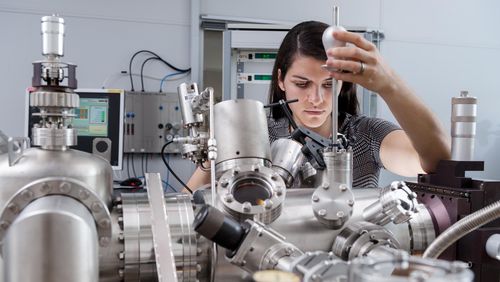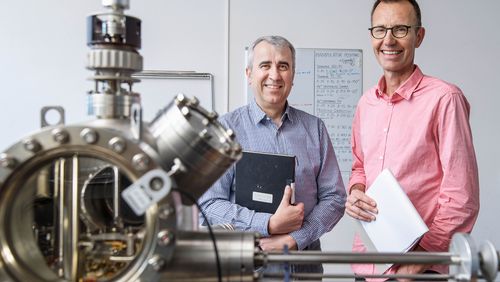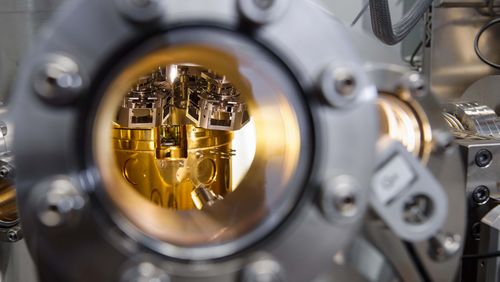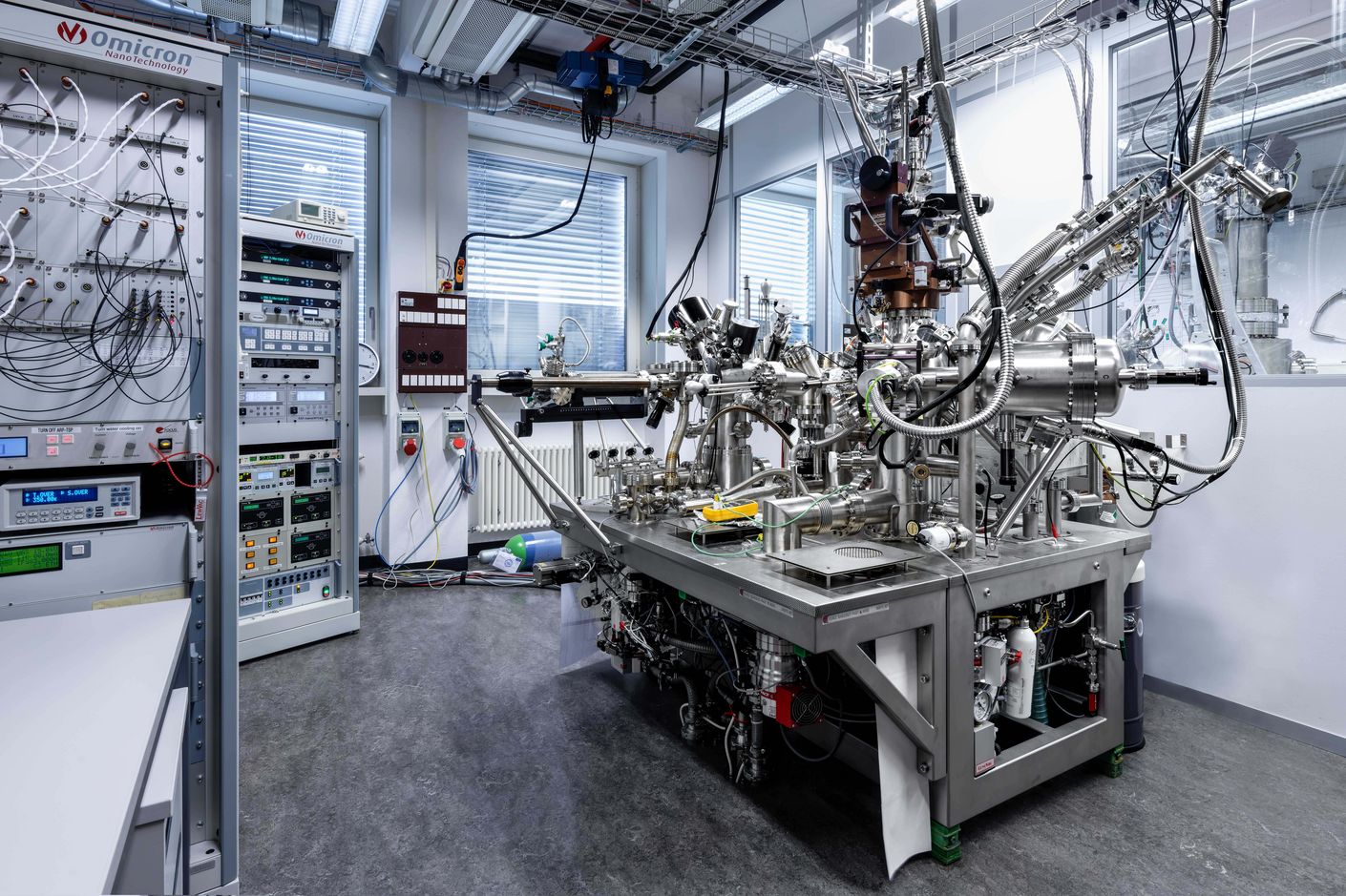
The ABCs of quantum physics
Only dyed-in-the-wool specialists really understand quantum physics. But that’s no reason to prevent the layperson from trying. While our puzzle may not explain the quantum realm in every detail, it provides easy-to-understand definitions.
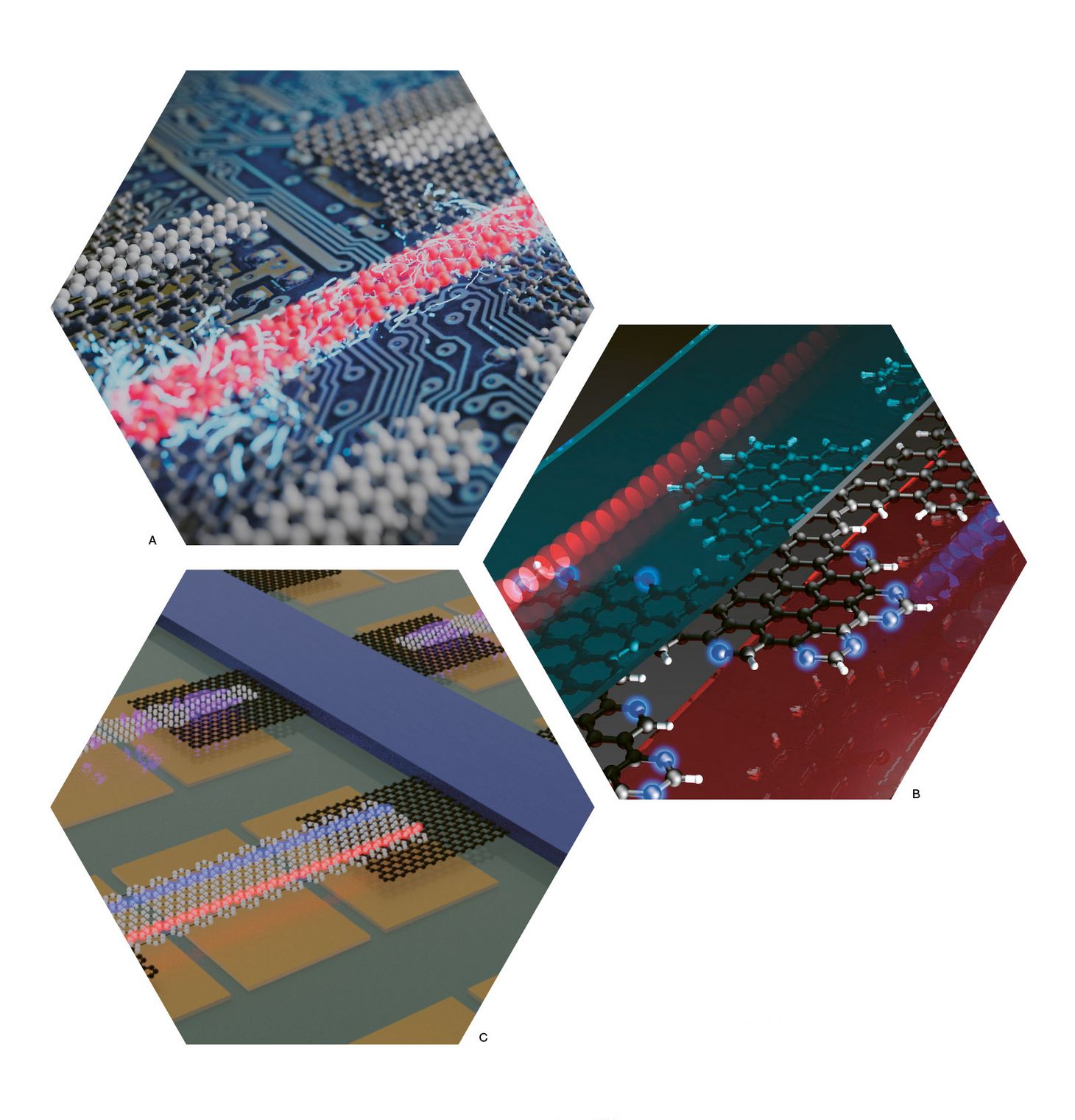
Image A visualises the integration of carbon nanoribbons (red) as an active element in an electronic component.
Image B illustrates sections of a carbon nanoribbon that have different chemical compositions. The upper part consists solely of carbon (green); there, electrons are responsible for electrical conductivity. The lower part of the nanoribbon also has nitrogen atoms (blue) in addition to the carbon atoms; here, electrical conductivity functions via the holes.
Image C shows carbon nanoribbons (light-grey structures) in a field-effect transistor architecture between two graphene electrodes.
Quantum mechanics
Quantum mechanics is a theory in physics used to describe the physical properties of particles and processes at the scale of the atom. It provides the foundation for atomic and elementary particle physics, and for quantum chemistry and quantum technology.
Nanometre
One nanometre is equal to one thousand-millionth of a metre—which is at the scale of the individual atom and where quantum effects become visible and malleable.
Quantum superposition
In the quantum world, superposition is possible, meaning certain states can overlap—those of electron spins or qubits, for instance. This effect explains a quantum computer’s ability to perform multiple operations at once.
Quantum entanglement
In this quantum effect, several particles are interconnected, despite not being physically linked and sometimes even separated by large distances. The effect can be used in various applications—programming quantum computers, to name one.
Qubit
A qubit, or quantum bit, is the smallest unit of information in a quantum computer, comparable to a bit in classical computers.
Spin
Spin is the rotational momentum and the associated magnetic moment of particles such as electrons. In the case of electrons, spin can have two values: spin up or spin down. In quantum technology, this property is used for data storage and processing.
Coherence time
Coherence time is a key parameter in quantum effects. It corresponds to the amount of time a quantum state remains stable before it begins to lose itself in the innumerable possibilities of the quantum world.
Carbon
Carbon is one of the most common and most important elements in living beings and organic molecules. It is also the element capable of forming the greatest variety of chemical bonds.
Graphene
Graphene is a carbon material with a honeycomb structure. It is two-dimensional, consisting of just a thin, single-atom layer.
Graphene nanoribbon
A graphene nanoribbon is a strip of graphene that is only a few atoms wide. The edges of the ribbons can be designed to have interesting quantum mechanical properties; these are the properties that the CarboQuant team want to analyse and refine.
Quantum tunnelling
Quantum mechanical particles like electrons can bridge the distance between two fine pieces of metal if the gap is small enough. This principle is called “quantum tunnelling” and is used in scanning tunnelling microscopy to render images of atomic structures by mapping electron flows.
Text: Santina Russo
Photos: Empa, Dübendorf, Mickael Perrin




